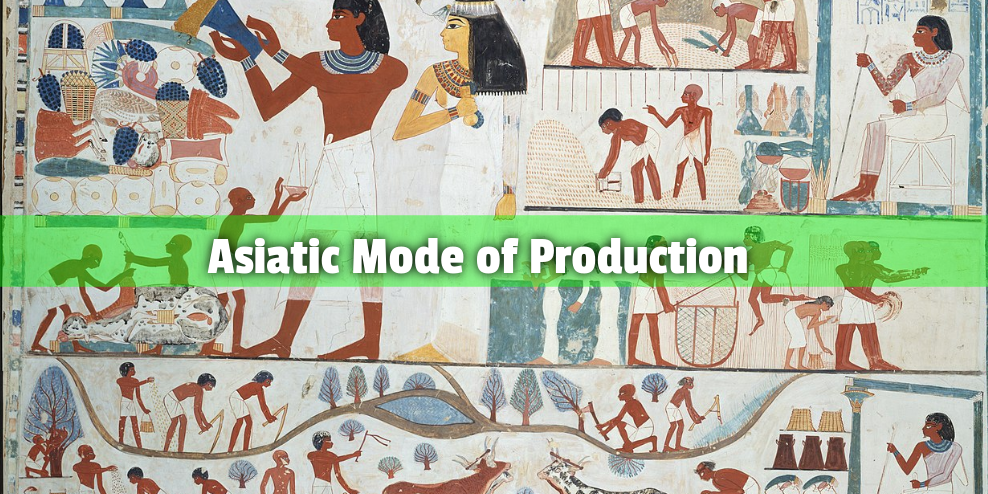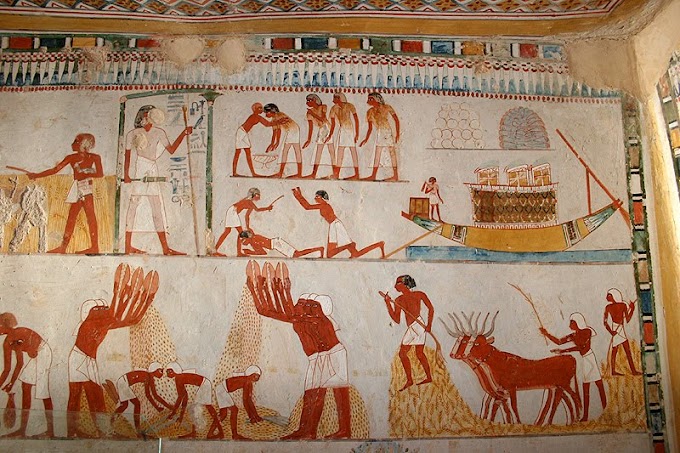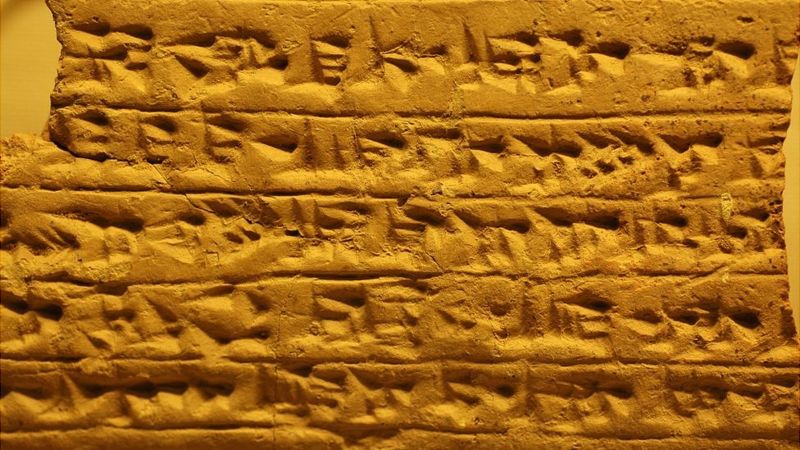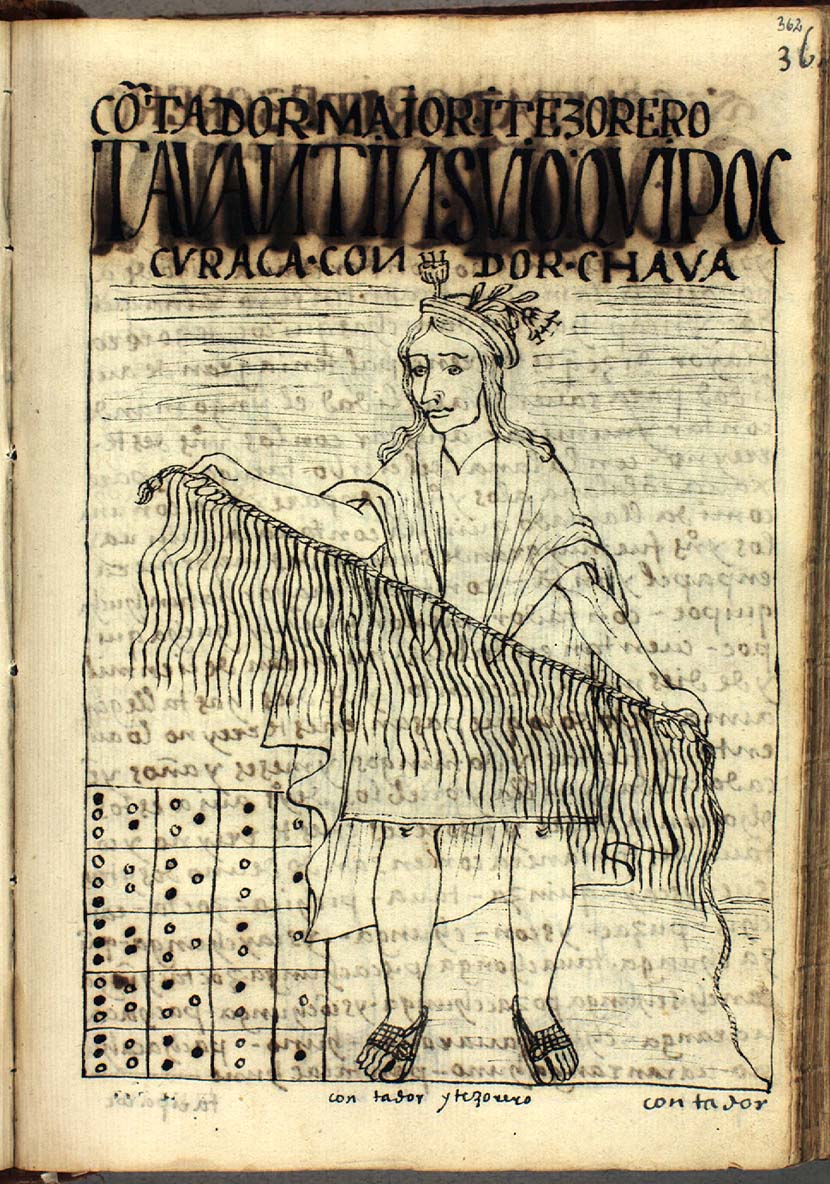Asiatic mode of production

Asiatic mode of production: mode of production based on the collective exploitation of the peasantry articulated around a bureaucratic state by means of a system of tribute charged on production and labor time. The peasantry kept remnants of tribal organization and communal ownership of land, but local and tribal particularities tended to be blurred by the impact of large public works which increased productivity and homogenized the organization of social work.
General features

Chinese imperial examinations. The organization of a massive bureaucratic class, selected from a unique examination system on the basis of syllabi that ensured technical training and moral indoctrination in the defense of the state (Confucianism), was one of the great stabilizers of the Asiatic mode of production in China.
We can date the origin of the Asiatic mode of production to the Indus (Mohenjo Daro) and Mesopotamian (Sumer) civilizations, Mycenaean Greece, Egypt, Nubia and China. With a great stability able to sustain the balances between classes, until a millennium and a half later different formations and states will appear or survive under this mode of production in present-day Ethiopia, North America (Aztec empire), the Andes (Inca Tahuantinsuyo), Korea (Baekje, Silla, early Joseon empire) and Indochina (Siam and Khmer empires).
The institutions in the Asiatic mode of production are reminiscent of institutions of conquest, in which an invading nomadic people institutionalizes and regulates the plunder over a set of subjugated peoples who were organized in former structures that remain under primitive communism or under forms of barbarism based on the agrarian commons.
This transformation of the invader into the exploiting class of a locally clustered mass of peasants transforms in turn the nature of communal property. The new ruling class gradually turns from necessary guarantor into collective owner of the principal means of production, the land.
...the global unity, which stands above all these small communities, presents itself as the supreme or sole owner, and thus the real communities only present themselves as hereditary owners. Since this unity is the authentic owner and the authentic presupposition of communal property, the unity itself can present itself as a particular entity , which is above the multiple particular entities, in which the individual, in reality, is deprived of property.
Grundrisse, Marx, 1857
In this movement, the ruling class of the Asiatic mode of production will orient social work toward the construction of large infrastructures (roads, waterworks, grain warehouses) and will develop a state apparatus with a bureaucracy separate from the ideological-religious structure, professionalized and specialized.
Class structure

The peasantry, originally a collection of subject tribes, each with its own communal property systems, became more homogenized as reliance on state public works equalized productive techniques, increased productivity and placed larger segments of production directly in the hands of the state bureaucracy.
The fundamental classes of the Asiatic mode of production were the nobility (exploiting class), the peasantry (exploited class), and the state bureaucracy in charge of the organization of the state.
Communal property having become a "concession" of the despot (pharaoh, emperor, Inca, etc.) the nobility will function as a strictly hierarchical collective exploiter separated from the central figure and his immediate family. The inevitable deification of the despot -materialization of the unity of a state reigning over diverse and dispersed tribal units- will in fact separate the ruling nucleus symbolically and physically from the nobility as a whole.
The nobility of the Asiatic mode of production will have a warrior and military component separate from the priestly stratum, upon which will fall not only the great ceremonials of state, but the bulk of the direction of the organization of social wo.

As the enforcement arm of the nobility, a relatively large class of specialized bureaucrats developed, responsible for keeping the tax system going, organizing labor levies, and directing the execution of public works.
To the needs of this bureaucracy in systematizing and organizing the exploitation of the peasant communities we owe the birth of writing and arithmetic (to record the levies), the first accounting systems (to keep the royal inventories), geometry (to calculate the tribute according to the cultivated area) and the first mechanical systems of registration and calculation (from the Asian abacus to the Andean quipu).

Under the nobility of the Asiatic mode of production and its state bureaucracy, the dispersed and diverse peasantry will tend to form a relatively homogeneous class. Born out of the domination of one tribe or set of tribes over others, the peasantry has, in principle, a tremendous diversity of local institutions linked to communal ownership with their own belief systems, forms of kinship and, in some cases, chiefdoms that outline a potential exploiting class.
Along with the nobility and the peasantry, in the Asiatic mode of production will appear more or less developed an ideologically and legally very controlled mercantile bourgeoisie, in other words an oppressed class, considered morally and politically inferior to the peasantry. It will be prevented from growing by its inability to form and reproduce capital in a very thinly commodified economy on whose endogenous forces it became unable to lay the foundations of its own system of exploitation.
In addition, groups of slaves -product of wars and repression- and salaried workers linked to the great public constructions appeared. The first recorded strike is that of the workers building a royal Egyptian necropolis in 1154 BCE.
The class struggle under the Asiatic mode of production
Rebellion of Tenochtitlan against Azacapotzalco in 1428, leading to the collapse of the Tepanec Empire and the constitution of the Mexica Empire
The dynamic element of the Asiatic mode of production in its ascendant period will come associated with the centralizing tendencies of the ruling class and the increase in the productivity of labor and resources thanks to hydraulic works and roads.
Where the Asiatic mode of production is fully developed - as in Ancient Egypt - there will be the destruction or total absorption of local chiefdoms and nobility into the nobility and state bureaucracy, and above all a homogenizing tendency resulting from the ways of labor imposed by the bureaucracy and the use of the great imperial infrastructures, which will come to create a fairly homogeneous peasantry. These were neither easy nor peaceful processes. The 15th century in what is now Mexico and in the Andes make this clear.
By contrast, the periods of decline of the various civilizations that developed under the Asiatic mode of production will see a fall in agrarian productivity and exacerbate the centrifugal tendencies of the peripheral sectors of the nobility - opening the door to a possible development of chieftainships towards feudalism. And as a counterforce a tendency towards the despotic domination of the center... which opened the prospect of a transformation of the class structure towards the institutions characteristic of slavery.
Other times, factions of the nobility and bureaucracy will in their struggle simply destroy the viability of public works, thus undermining the basis of their own power until the "collapse of the warring classes" occurs, often following tribal/peasant rebellions or invasions by rival empires.
http://dictionary.marxismo.school/Asiatic mode of production